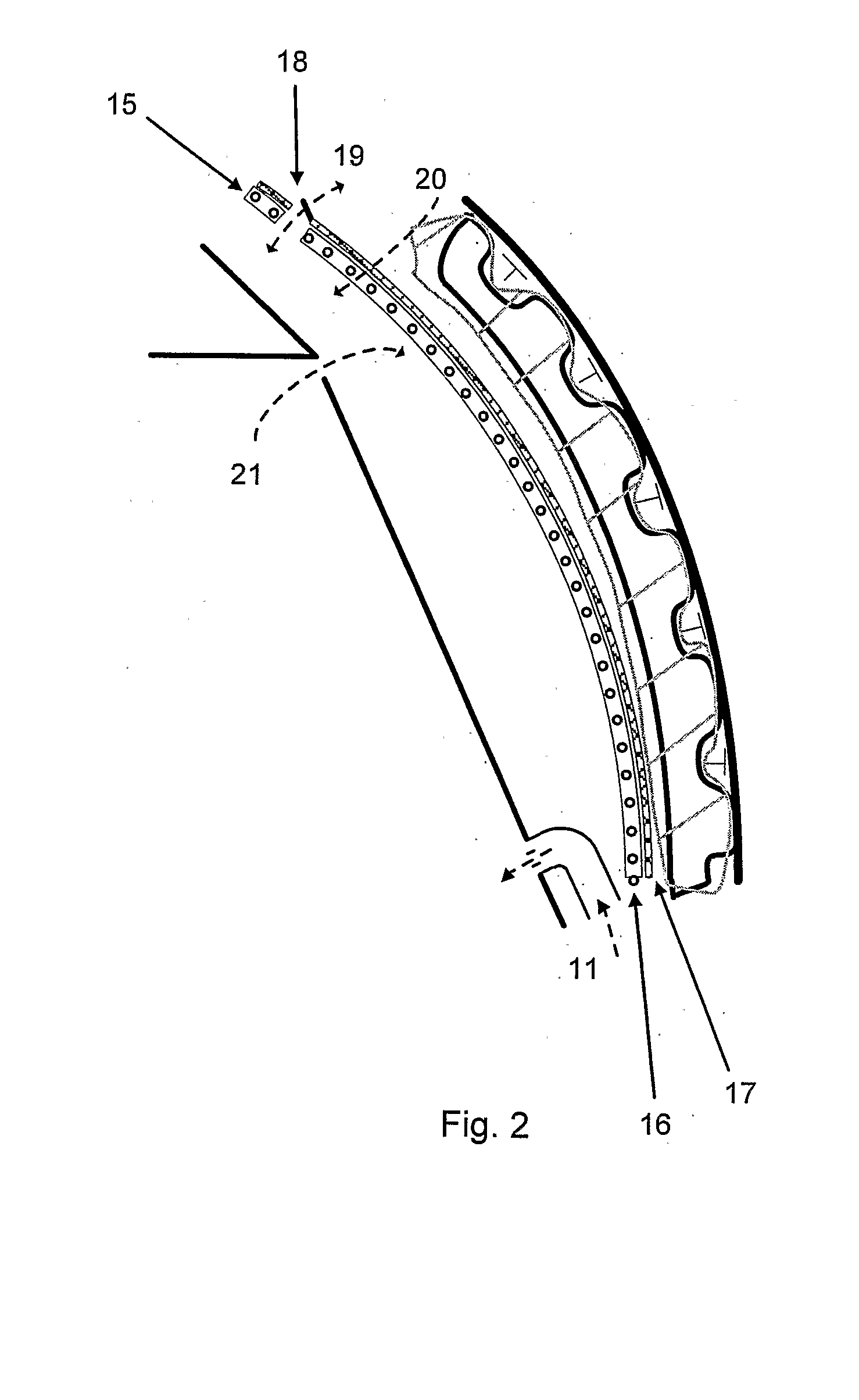Aircraft Fuselage Heating
a technology for fuselage shells and aircraft, which is applied to aircraft accessories, aircraft floors, air-treatment apparatus arrangements, etc., can solve the problems of increasing fuel consumption, affecting the service life of aircraft, and not being practical for many passenger and transport aircraft, so as to prevent ice formation and prevent ice formation. , the temperature of the aircraft fuselage shell structure is increased, and the effect of preventing ice formation
- Summary
- Abstract
- Description
- Claims
- Application Information
AI Technical Summary
Benefits of technology
Problems solved by technology
Method used
Image
Examples
first embodiment
[0033]the invention will now be described with reference to FIG. 2. The aircraft fuselage shell has a similar structure to that of FIG. 1. In addition, a support layer 15 is provided carrying a heating element 16, the support layer 15 being disposed adjacent the insulation material 6 on an interior side of the fuselage shell structure. In this context, “adjacent” means “immediately adjacent” or “near to”. The support layer 15, or an additional layer placed on the fuselage side thereof, is impermeable to water droplets but is permeable to water vapour. Such a construction allows any moisture which is on the fuselage side of the support layer 15 and which condenses on an outer surface of the support layer 15, that is, on the cold side, to wick through the support layer 15 to the warm cabin side of the layer 15. To encourage this effect, the support layer 15 may be provided with a moisture absorbent insulation layer 17 on the fuselage side of the support layer 15. The insulation layer ...
second embodiment
[0039]the invention will now be described with reference to FIG. 3. The aircraft fuselage shell has a similar structure to that of FIG. 1. In addition, a pipe 22 is mounted adjacent the fuselage shell structure. In this context, “adjacent” means “immediately adjacent” or “near to”. Air is directed through openings 23 in pipe 22. Ambient air taken from outside the aircraft engines and heated by the engines through heat exchangers using the “hot end” of the engines as a heat source is pressurised and then passed through pipe 22 as indicated by arrow 24. Upon exiting the pipe 22 through openings 23 the heated air is passed over the interior side of the fuselage shell structure, as indicated by arrows 25. The air can be hotter than the desired cabin air temperature as it will heat the fuselage shell structure before dissipating throughout the cabin. The heated fuselage shell structure will then dissipate heat to the ambient airflow through surface 2. The effect of passing air over the f...
PUM
 Login to View More
Login to View More Abstract
Description
Claims
Application Information
 Login to View More
Login to View More - R&D
- Intellectual Property
- Life Sciences
- Materials
- Tech Scout
- Unparalleled Data Quality
- Higher Quality Content
- 60% Fewer Hallucinations
Browse by: Latest US Patents, China's latest patents, Technical Efficacy Thesaurus, Application Domain, Technology Topic, Popular Technical Reports.
© 2025 PatSnap. All rights reserved.Legal|Privacy policy|Modern Slavery Act Transparency Statement|Sitemap|About US| Contact US: help@patsnap.com



